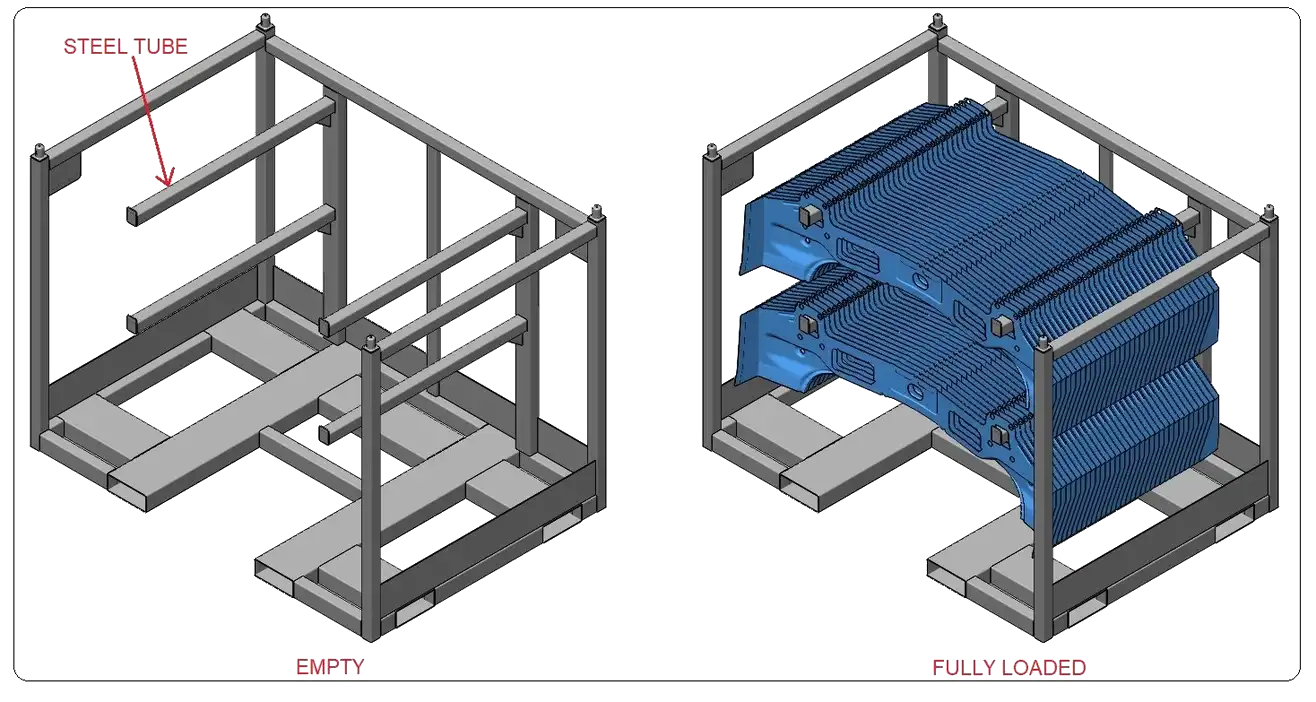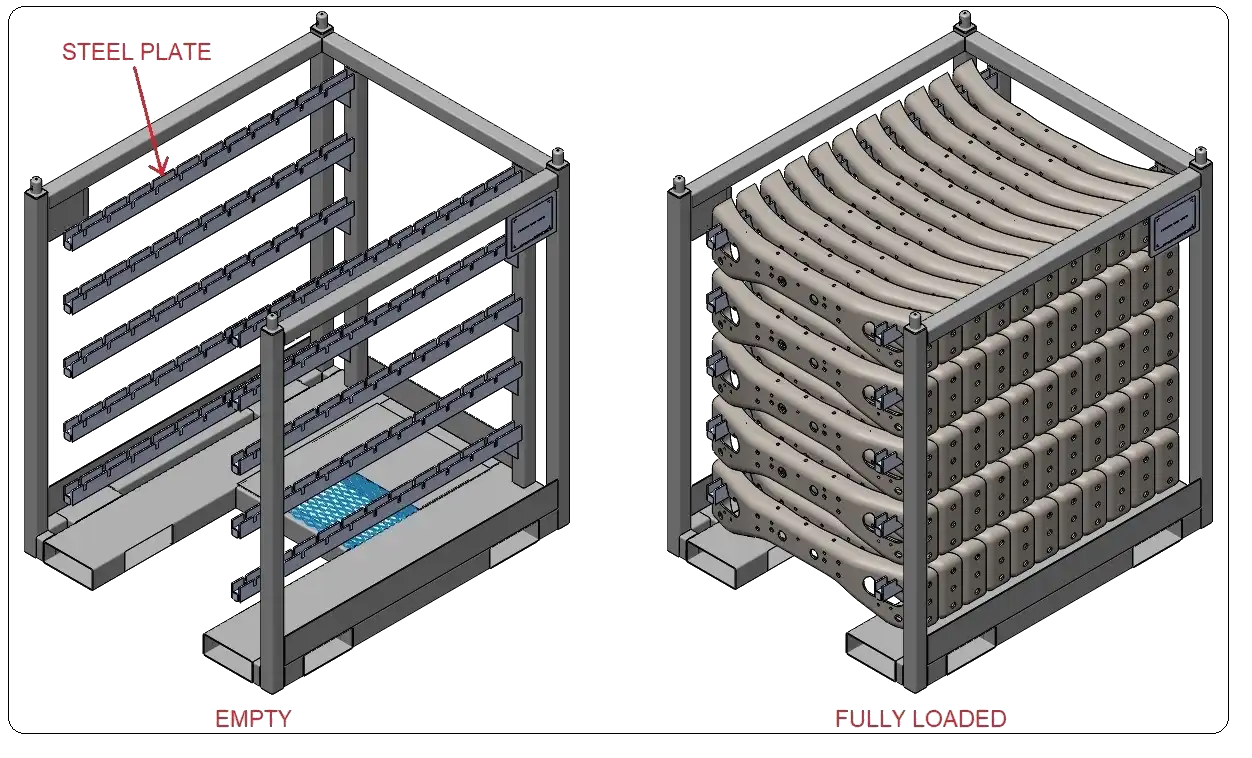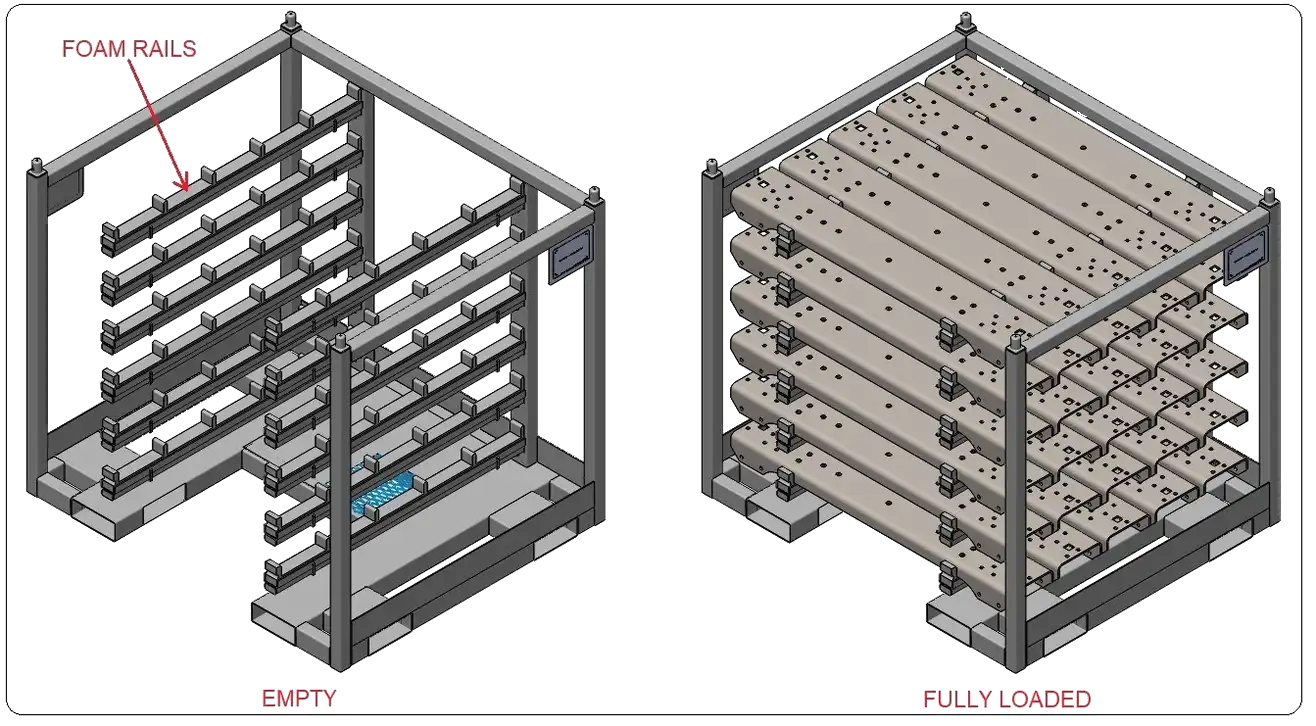Explore innovative designs, practical applications, and the numerous benefits of utilizing a wine barrel rack for your facility.
Read MoreCantilever Rack: Maximizing Space and Efficiency
What is a Cantilever Rack?
A cantilever rack is a type of storage system designed to efficiently organize and maximize storage space, particularly for long and bulky items such as lumber, pipes, or furniture. Unlike traditional storage systems like pallet racks or shelving units, cantilever racks feature horizontal arms extending from a central vertical column, allowing for easy storage and retrieval of items without the need for vertical support in the front.
Key Takeaways:
- -> Cantilever racks are designed for storing long and bulky items.
- -> They feature horizontal arms extending from a central vertical column.
- -> Cantilever racks provide easy access and retrieval of items without front vertical support.

Benefits of a Cantilever Rack
Cantilever racks offer several benefits that make them an ideal choice for organizations looking to optimize their storage space:
1. Efficient utilization of storage space: Cantilever racks maximize vertical space utilization by allowing items to be stored on multiple levels. This not only provides a significant increase in storage capacity but also allows for better organization and accessibility of items.
2. Easy accessibility and retrieval of items: With cantilever racks, items can be easily accessed and retrieved without any obstructions. The absence of front vertical supports provides unobstructed access, making it convenient for forklifts or other equipment to load and unload items quickly.
3. Versatility to store items of different sizes and shapes: Cantilever racks are highly versatile and can accommodate items of various lengths, shapes, and sizes. The adjustable arms on the racks allow for customization based on the specific storage requirements of the items being stored.
Types of Cantilever Racks
There are three main types of cantilever racks, each designed to suit different storage needs:
1. Single-sided Cantilever Racks: Single-sided cantilever racks consist of a single column with arms extending in one direction. These racks are typically placed against a wall or used when only one side needs to be accessed.
2. Double-sided Cantilever Racks: Double-sided cantilever racks feature arms extending from both sides of a central column. These racks provide easy access from either side and are commonly used in larger storage facilities where both sides need to be utilized.
3. Wall-mounted Cantilever Racks: Wall-mounted cantilever racks are designed to be directly attached to a wall, saving even more floor space. These racks are often used in areas with limited floor space or when additional structural support is needed.
How Does a Cantilever Rack Work?
To understand how a cantilever rack works, it is essential to grasp its basic structure and components. The key components of a typical cantilever rack include:
-
Vertical columns: Vertical columns serve as the main support and stability for the rack. They usually have multiple slots or holes to adjust the position of the arms.
-
Horizontal arms: Horizontal arms are the primary load-bearing components of the cantilever rack. They extend horizontally from the vertical columns and are where the items are placed. The arms can be adjusted to different heights to accommodate items of various sizes.
-
Bases and braces: Bases provide stability to the rack by connecting the vertical columns to the floor. Braces are diagonal supports that strengthen the rack’s overall structure and prevent sway or wobble.
The load capacity and weight distribution on a cantilever rack are critical considerations. It is important to distribute the weight evenly and ensure that the items are within the load capacity specified by the manufacturer. Overloading or uneven loading can compromise the stability of the rack and pose safety risks.
Key Features to Consider when Choosing a Cantilever Rack
When selecting a cantilever rack for your storage needs, several key features should be considered:
1. Material and Durability: The material of the cantilever rack should be sturdy and durable to withstand the weight and strain of the stored items. Common materials include steel and aluminum, with steel being the most durable option.
2. Adjustable Arms and Dividers: Opt for a rack that offers adjustable arms and dividers to accommodate items of different sizes. This feature allows for flexibility and customization based on specific storage requirements.
3. Safety Measures like Rack Guards and Bases: Look for cantilever racks that come with safety measures such as rack guards to protect against accidental impacts and bases to provide stability. These safety features can significantly reduce the risk of accidents and damage to the rack.

Installation and Maintenance Guidelines for Cantilever Racks
Proper installation and regular maintenance are crucial for the safe and efficient operation of cantilever racks. Here are some guidelines to follow:
Step-by-step installation process:
- 1. Start by determining the layout and position of the cantilever rack in your storage area.
- 2. Install the vertical columns securely, ensuring they are level and aligned.
- 3. Attach the horizontal arms to the vertical columns, adjusting them to the desired height and spacing.
- 4. Secure the bases and braces to provide stability to the entire structure.
- 5. Perform a thorough inspection to ensure all components are properly installed and the rack is stable.
Regular maintenance and safety inspections:
- – Conduct regular inspections to check the overall integrity and stability of the rack.
- – Look for any signs of wear, damage, or corrosion and address them promptly.
- – Regularly clean the rack to remove any debris or dust that may accumulate.
- – Train employees on proper loading and unloading techniques to avoid mishaps and accidents.
How to Optimize your Cantilever Rack for Maximum Storage Capacity
To maximize the storage capacity of your cantilever rack, consider the following optimization strategies:
1. Analyze and categorize your inventory
Start by analyzing your inventory and categorizing items based on their size, weight, and frequency of use. This analysis will help you understand the storage requirements of each item and determine the best positioning on the rack.
2. Space optimization strategies
To make the most of your cantilever rack’s storage capacity, consider the following strategies:
- – Position items strategically on the rack, placing heavier items at the bottom and lighter items at the top.
- – Utilize vertical space by storing items at different levels, making use of the adjustable arms.
- – Adjust arm levels to accommodate items of various lengths and create better organization.
3. Labeling and organization
Implementing an effective labeling system is crucial for easy identification and retrieval of items. Consider the following tips for labeling and organization:
- – Clearly label each item with a unique identifier to locate it quickly.
- – Group similar items together to facilitate efficient retrieval.
- – Implement a color-coded system to quickly identify different categories or types of items.
4. Safety considerations
Ensuring safety is paramount when optimizing your cantilever rack’s storage capacity. Follow these considerations:
- – Adhere to the load capacity limits specified by the manufacturer.
- – Distribute the weight evenly across the arms and levels of the rack.
- – Install safety measures such as end stops, column protectors, or guardrails to prevent items from falling or causing accidents.

Maintenance and Safety Tips for Cantilever Racks
Regular maintenance and proper safety practices are essential for the longevity and safe operation of cantilever racks. Here are some tips to follow:
- 1. Conduct frequent inspections to check for any signs of damage, corrosion, or instability. Address any issues immediately.
- 2. Train employees on safe loading and unloading practices, including weight distribution and proper handling techniques.
- 3. Promptly address any maintenance issues that arise, such as loose bolts or damaged components, to prevent accidents and ensure the rack’s integrity and reliability.
Conclusion
Cantilever racks provide an efficient and versatile storage solution for organizations dealing with long and bulky items. Understanding the different types of cantilever racks, their benefits, and how they work is essential in making an informed decision for your storage needs. By optimizing your cantilever rack’s storage capacity and following maintenance and safety guidelines, you can ensure its longevity and safe operation.
Remember to choose a reliable manufacturer or supplier for quality products and excellent customer support. With a well-designed and properly maintained cantilever rack, you can effectively organize and maximize your storage space.

Customize Your Own & Get a FREE Estimate!
Simply e-mail us at sales@plexformps.com with all your information
OR call us today & speak to one of our packaging professionals









